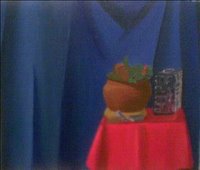
My childhood hero, in the sixties, was a medical student from the Mysore Medical College. He was a consummate athlete, strong and handsome. He won every event he competed in, during the annual Dasara sports competitions. Or at least that is what I felt. He played football and perhaps played all positions himself except the goalkeeper’s. He had a dazzling smile and when he flashed it his brilliant white teeth sparkled. He did not play cricket and I did not even like cricket anyway. His name was Olufemi Akande. He was Nigerian. He was black. Very black.
Then as time went on there were other heroes, people who fascinated me and many of them were black.
Patrice Lumumba, for instance. I do not know much about him except that there was an international peace university in his name atop Lenin Hill and that he was assassinated by Moise Tshombe. Childish memories but, but they definitely caught my imagination. Tshombe was a man I loved to hate.
Arthur Ashe, the quintessential gentleman in a gentleman’s game. How can one forget the description that appeared in The Hindu about the match between him and Connors which Ashe won in style. “Ashe played the matador to Connors’ bull to perfection. A cut here a, nick there and he bled him to death.” I heard the running commentary on the radio and was thrilled. Recently, I saw the match on the TV and it was all that and more.
Then there was Sidney Poitier. I devoured his movies. “Guess Who is Coming to Dinner”, “To Sir, With Love”, “The Last Man”, “They call me Mr. Tibbs”…… He is perhaps the handsomest man I have ever seen.
Then there is Nelson Mandela, a most extraordinary man. Einstein’s comment about Gandhi applies, to some degree at least, to this living legend. “Generations to come will scarce believe that such a man as this walked this earth in flesh and blood.”
Before him was, of course, Martin Luther King Jr. So promising a life, cut short by an assassin’s bullets. But in the brief time he was around he effected a change in this world that many are reluctant to accept.
Then there was a model featured on the cover of the magazine Span (published by the USIS). Beverly Johnson. Undoubtedly one of the most beautiful faces I have ever seen.
There were others too, Paul Robeson the singer, Washington Carver the botanist, Booker T Washington the educator, Muhammed Ali (“floats like a butterfly but stings like a bee” and “I ain’t got nothing against the Vietcong” and more importantly a conscientious abstainer from the Vietnam war), Wilt Chamberlain (called Wilt the stilt!), Pele, Viv Richards (and practically the whole WI cricket team) Karim Abdul-Jabbar, Angela Davis. Duke Ellington, Ella Fitzgerald,
And in more recent times Jordan, Magic Johnson, Eddy Murphy, Florence Fishbourn (Morpheus of Matrix), Naomi Campbell, Denzel Washington….
I have always wondered if I was fascinated by all these people because they were black or in spite of their blackness? Suffice to say that it added some colour to it? I do believe that all these people have achieved something and quite often something great and have shown great character. Their achievements are inspiring. They have done what they have done overcoming what could have been a drawback – their colour.
I have always been impressed by the fact that the greatest of Indian epic heroes turned Gods, Rama and Krishna were dark skinned. (Alas! Calendar artists have painted them blue! Quite often a very sick blue!) So, Indian aesthetics, apparently, found black beautiful. These two were not great and handsome ‘in spite of being dark’, they were handsome because they were black.
One of my favourite movie sequences is from the movie “Gods must be crazy”. The protagonist, an African tribesman, comes across a Caucasian woman for the first time in his life. He stares her with such great pity. (Consummate acting) He wonders, “Why have the Gods been so unkind to her? Hair like cobwebs (a platinum blonde, straight hair) and skin so devoid of colour!”
Almost all of the people in the above list look good to me, even those who were not in the looks business.
And then there was Fair and Lovely. And now there is Fair and Handsome. I just do not understand it.
In a lighter vein (not by colour of course), whatever happened to the dark and handsome heroes concept popularised by Mills and Boone and their ilk anyway?
What has colour got to do with good looks? Beats me.
Look at the picture and decide.
A stray incident I once witnessed: An ‘black’ African came to a petrol bunk in Mysore and asked for some petrol, in Kannada. As the customer left, the petrol bunk assistant said to another “Did you see? The blackie speaks Kannada!” (“nODdyEnlaa? kariya kannaDdall_maataadtavne?”). The interesting thing was that the petrol bunk assistant was darker than the ‘blackie’!
Why did I write all this? Because, this is one of my pet peeves. I have seen dark and good looking and good people having a complex about their colour. I have seen them waste money and time trying to acquire a lighter skin and looking, somehow, a little silly in the bargain. If they had put in the same effort in developing their character, they would have been better people, happier and as a consequence, even looked good, I am sure.
Look at the name of my blog. Safet(y)valve. I had to get this out of my system.

